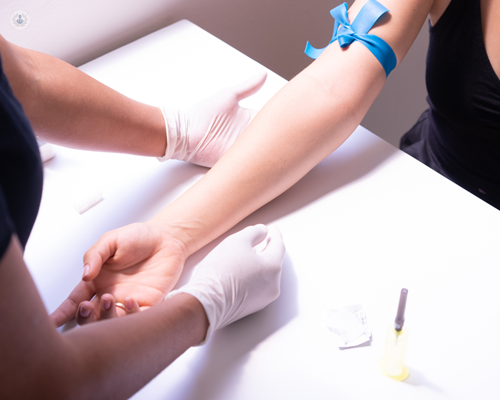Lithium test
What is analysed?
Lithium levels are analysed to measure the concentration of lithium in the blood.

What does the result mean?
The result indicates the level of lithium present in the bloodstream. This measurement is crucial for monitoring lithium therapy in patients with bipolar disorder or other psychiatric conditions.
Why undergo the analysis?
Monitoring lithium levels helps ensure therapeutic efficacy while minimising the risk of toxicity associated with elevated levels.
When to undergo the analysis?
The analysis is typically performed regularly during lithium therapy to maintain therapeutic levels and prevent adverse effects.
What sample is required?
A blood sample is required for lithium level analysis.
Is any prior preparation necessary?
Generally, no specific preparation is necessary before taking a blood sample. However, patients should follow any instructions provided by their healthcare provider.
How is it used?
Lithium levels are used to adjust medication dosage and assess treatment response in patients with bipolar disorder or other psychiatric conditions.
What are the normal values?
The therapeutic range for lithium levels typically falls between 0.6 to 1.2 milliequivalents per litre (mEq/L) for maintenance therapy. However, optimal levels may vary depending on individual factors and treatment goals.
Lithium Level Reference Table
| Lithium Level (mEq/L) | Interpretation |
| Less than 0.6 | Subtherapeutic |
| 0.6 - 1.2 | Therapeutic range for maintenance therapy |
| Above 1.5 | Potential toxicity, requires medical attention |
This table offers a concise interpretation of lithium levels, aiding healthcare providers in optimising treatment and ensuring patient safety during lithium therapy.
What do altered values signify?
Elevated lithium levels (above 1.5 mEq/L) may indicate lithium toxicity, characterised by symptoms such as tremors, confusion, dizziness, and nausea. On the other hand, subtherapeutic levels may lead to inadequate treatment response and symptom relapse.